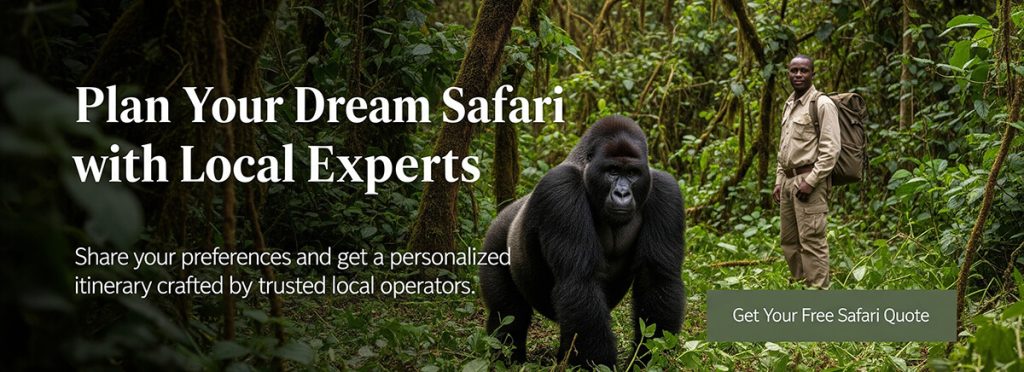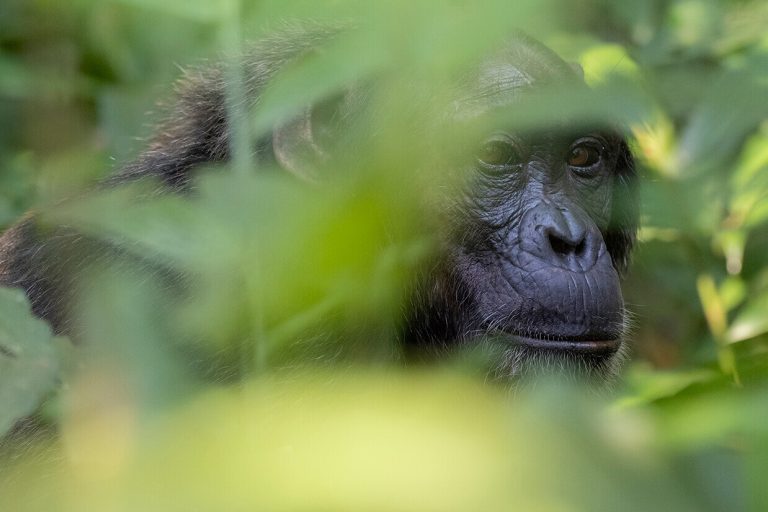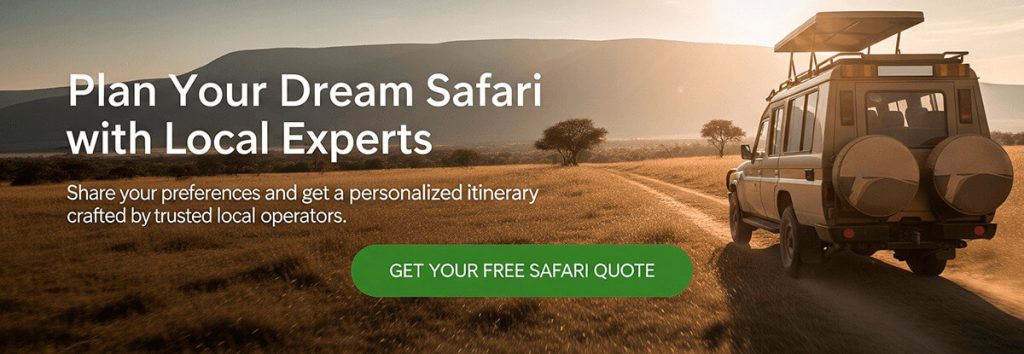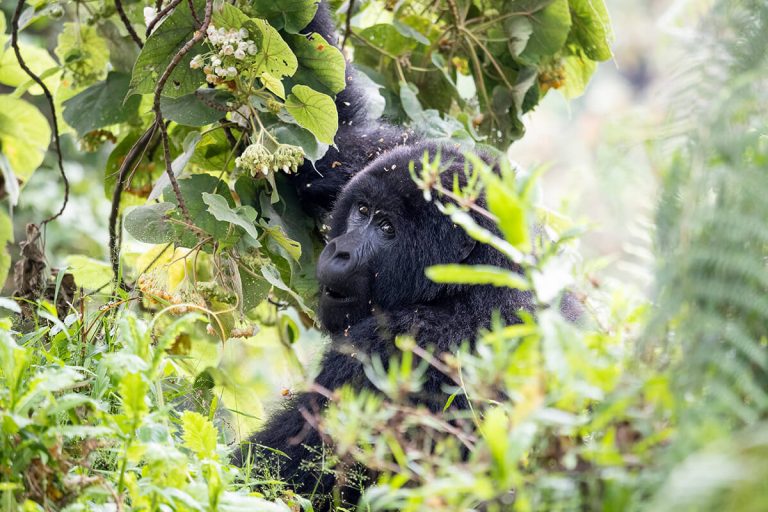Wondering about the Uganda safari cost is one of the first steps when planning a route through this country. A […]
Read MorePlanning a Trip to Uganda: Itinerary, Cost & Tips
Planning a Trip to Uganda allows you to discover a destination with truly unique nature on the African continent. Uganda is one of the best places in the world to see wild mountain gorillas — a critically endangered species, with only around 1,000 individuals still living freely in the wild.
But this country offers much more than just its mountain gorillas. When planning a trip to Uganda, you also have the privilege of observing many other fascinating animal species. From the chimpanzees in the forests of Kibale, to the golden monkeys in the Virunga Mountains, or the tree-climbing lions of Queen Elizabeth National Park.
This journey to Uganda showed me why the country is known as the Pearl of Africa. It hosts an incredible variety of landscapes: savannas, lush rainforests, lakes, extinct volcanoes, and craters — all of which are home to exceptional wildlife. From Africa’s iconic mammals to some of the planet’s most endangered primates. All of this, combined with the friendliness and warmth of its people, makes Uganda one of the most complete and rewarding destinations in Africa.
Planning a Trip to Uganda: What to know before the trip
Essential Travel Information
How to Get to Uganda
Most people planning a trip to Uganda will arrive through Entebbe International Airport, which is located very close to the country’s capital, Kampala.
You can also combine a trip to Uganda with one of its neighboring countries, such as Rwanda or Kenya. However, even in those cases, it is most common to enter Uganda by plane.
How to Get Around Uganda
The best way to get around Uganda is by 4×4 vehicle, especially if you plan to go on safaris. Uganda is not particularly well-equipped for efficient public transportation.
If you’re planning a trip to Uganda as an independent traveler, there are several agencies that rent 4×4 vehicles — for example: Road to Africa or Rent a Driver Uganda. If you prefer not to drive yourself, you can also hire a car with a driver. Driving at night is not recommended.
Where to Stay
Near national parks and other tourist areas, Uganda offers good infrastructure when it comes to accommodations, with options for all budgets. These range from basic tents with beds inside to luxury lodges with plenty of amenities.
If you’re traveling independently, many accommodations can be booked through Booking.com. In other cases, direct booking via email is required. A highly recommended and good value option is the group of Nature Lodges accommodations.
You can also camp at Uganda Wildlife Authority (UWA) sites located inside some of the national parks. In this case, you must bring all your own camping gear. The cost is around $6 per person.
Emergency Numbers
The emergency numbers in Uganda are 112 and 999.
For Spanish citizens, the emergency consular number is +254733631144.
Vaccines
Uganda is an endemic country for yellow fever, so the yellow fever vaccine is mandatory for visiting.
Vaccines for hepatitis, tetanus, and typhoid fever are also recommended. Depending on the length of your stay, others such as rabies, polio, or meningitis might also be advisable. It’s best to visit a travel or tropical medicine clinic a few months before planning a trip to Uganda to get up-to-date health information.
Malaria
When planning a trip to Uganda, it’s important to know that malaria is present throughout the country, and in some areas, it is quite prevalent. Therefore, it’s essential to take all possible precautions to avoid mosquito bites: use a strong repellent, sleep under a mosquito net, and wear long-sleeved, light-colored clothing.
In most cases, malaria prophylaxis medication is also recommended. Again, the best option is to consult a travel health professional before your trip.
SIM Card
To have internet access while in Uganda, you can easily buy a prepaid SIM card at the airport. Just after exiting the terminal, turn left and you’ll find three booths offering SIM cards from different providers: MTN, Airtel, and Africell.
Generally, Airtel and MTN offer the best coverage. I paid 50,000 UGX for 10GB.
Plug Type
In Uganda, plug type G is used. Be sure to bring an adapter.
Visa, Language & Climate
Language
The official languages of Uganda are English and Swahili.
Capital City
Kampala
Visa
Spanish citizens need a visa to enter Uganda. Currently, it must be applied for online before arriving in the country. The application is submitted through this website.
If you’re planning a trip to Uganda only, you should apply for the standard tourist visa. It allows you to stay in the country for up to 3 months. The cost is $50, payable by card when submitting the online application. It typically takes around 48 hours to be approved. It’s recommended to apply one or two weeks before arrival.
If you plan to visit Kenya or Rwanda in addition to Uganda, it’s more efficient to apply for the East African Tourist Visa. This visa is valid for 90 days from the day of entry and allows free movement between Uganda, Kenya, and Rwanda. It’s important to apply through the embassy of the first country you’ll enter. This visa costs $100.
Time Zone
Uganda is in the GMT+3 time zone (two hours ahead of mainland Spain).
Climate
Uganda is located near the equator, so temperatures are fairly consistent throughout the year. Daytime temperatures usually reach around 27ºC, while nighttime lows can drop to around 15ºC.
When planning a trip to Uganda, the most important factor to consider is the difference between the dry and rainy seasons. The dry season includes the months of June, July, August, December, January, and February — with June and July typically being the driest months.
However, rain can occur year-round, so bringing a rain jacket is essential no matter the season.
Other Facts About the Country
Uganda was a British colony until 1962 and still drives on the left side of the road.
Agriculture is the country’s main economic sector, with coffee exports being the primary business. Tourism accounts for less than 10% of Uganda’s GDP.
Around 85% of the population is Christian. There is also a Muslim minority.
Economy
Currency
The official currency of Uganda is the Ugandan Shilling (UGX).
However, the tourism industry — including payments to local agencies, national park entrance fees, and permits for primate trekking — is largely dollarized. Many prices are listed in US dollars, and in many cases, payments must be made in dollars (note: bills must be from after 2009).
Paying by card is generally not possible in most establishments.
Prices
Basic goods in Uganda are cheaper than in Spain. Budget accommodation is also widely available. However, entrance permits for national parks, gorilla trekking, and chimpanzee tracking are more expensive. Fees vary between local and foreign visitors.
To give you an idea of the costs when planning a trip to Uganda, here are some examples:
- Price of a local restaurant combo plate: 18,000 UGX
- Price for a two-course meal in a hotel restaurant: 35,000 UGX
- Bottle of water: 2,000 UGX
- One liter of gasoline: 5,300 UGX
- Entrance permit to national parks (e.g., Murchison Falls, Queen Elizabeth): 40 USD
- Chimpanzee tracking permit: 250 USD
- Mountain gorilla trekking permit: 800 USD
- Golden monkey tracking permit: 60 USD
If you book a safari tour with a local agency, the price usually includes everything (guide, vehicle, permits, meals, and accommodation). Prices vary depending on whether you travel privately or in a group, and based on the number of people. In general, if the tour includes gorilla trekking, the daily cost ranges between €200 and €300 (based on standard-level accommodation).
Although the cost of the gorilla trekking permit is quite high, much of that amount goes toward the conservation and study of this highly endangered species.
If you’d like more detailed information about travel expenses, check out my post on the budget for planning a trip to Uganda.
Tipping
Tipping during a trip to Uganda is not mandatory, but it is expected — especially if you are satisfied with the service.
It’s best to give tips in the local currency, the Ugandan Shilling.
Some general guidelines for tipping:
- For the driver: Between €10 and €15 per day, per person
- For primate trekking guides: Between €15 and €20 per person
- For hotel staff: Between €2 and €10 per day, per person (usually there is a general tip box for the whole team)
Haggling
In Uganda, mastering the art of haggling is essential. The first price offered is usually inflated, and bargaining is expected.
Safety Tips When Planning a Trip to Tanzania
During this trip to Uganda, I felt safe at all times. I believe Uganda is a country that can be visited either with a local agency or independently with confidence.
The main tourist destinations in the country are quite safe. So when planning a trip to Uganda, the most important thing to keep in mind is that there are some regions within the country that are considered risky and should be avoided.
The Karamoja region (in the northeast), the border with the Democratic Republic of the Congo, and the border with South Sudan are conflict zones that should be avoided, as armed conflicts are still present in these areas.
Additionally, caution is also advisable in the capital city, especially regarding theft and petty crime.
That said, it’s generally possible to travel around the country without any major issues. Most problems can be avoided by following basic safety precautions:
- Avoid driving at night and stay off secondary roads.
- While on the road, keep doors locked and windows closed.
- If you’re heading to the Jinja area, take extra care while driving, as road conditions are often poor.
As always, before starting any journey, it’s worth checking the travel advisories from your country’s Ministry of Foreign Affairs.
All About Safaris in Uganda
How to Book Your Uganda Safari
The easiest and most recommended way to book your Uganda safari is through a local tour operator. For my own trip, I chose a Ugandan company and couldn’t have been more satisfied. Local operators handle all the logistics—accommodation, national park permits, meals, and transportation—and they’re often very knowledgeable about wildlife movements, which is especially important for experiences like gorilla trekking or tracking tree-climbing lions.
You can request personalized quotes from trusted local tour operators through Safaris by Locals.
While booking through a local operator is the most popular and reliable option, it’s not the only one. You can also consider self-drive safaris, fly-in safaris, or international tour packages that include flights, accommodation, and safari activities. Each option has its pros and cons depending on your travel style and budget.
1. Self-Drive Safari
Self-driving in Uganda is possible and can appeal to adventurous or budget-conscious travelers. The roads to the main parks like Queen Elizabeth, Murchison Falls, or Lake Mburo are fairly accessible, and 4×4 rentals are available in Kampala and Entebbe. However, the cost savings are usually small once you add up park fees, fuel, accommodation, and car hire.
More importantly, without a professional guide, it’s easy to miss wildlife or overlook the subtle details that enrich the safari experience. In places like Bwindi Impenetrable Forest or Kidepo Valley, having a local expert can make a big difference.
For most travelers, especially first-timers, we don’t recommend self-driving. A guided safari is far more rewarding and stress-free.
2. Private Safari with a Local Tour Operator
Booking a private safari with a local Ugandan operator offers the best mix of value, flexibility, and comfort. Your guide not only handles the driving but also spots wildlife, explains behaviors, and coordinates all permits—crucial for gorilla and chimpanzee tracking.
Reliable local operators often have good relationships with lodges and park authorities, which can mean better rates and smoother logistics. Prices will vary depending on the quality of the guide, vehicle, and accommodations. Budget options exist but can come with compromises, so it’s important to check reviews and ask for detailed itineraries before booking.
You can easily request quotes from vetted Ugandan tour operators on Safaris by Locals.
3. Lodge-Based Safari Packages
Some lodges in Uganda offer full safari packages, including accommodation, meals, and game drives. These can be convenient if you’re staying in one area for a few days, like Queen Elizabeth National Park or Murchison Falls. However, they often include shared activities and less flexibility over your schedule.
If your goal is to maximize wildlife sightings and enjoy a fully personalized experience—including gorilla trekking or visits to more remote parks like Kidepo—then a private safari with a local operator is usually the best choice.
How Much Does a Uganda Safari Cost?
A typical private Uganda safari costs around $300 per person per day. This price usually includes accommodations, park fees, meals, transportation, and guided activities such as game drives or boat safaris. For shared group safaris, you can expect to pay around $150 per person per day, though these generally involve more basic accommodations and fixed itineraries.
Here’s a breakdown of typical safari costs in Uganda based on comfort level:
- Shared Budget: From $250 per day
- Private Budget: From $300 per day
- Private Midrange: From $400 per day
- Private Luxury: From $650 per day
- Private Luxury+: From $1,000 per day
These prices apply when booking through a local tour operator. Booking through international travel agencies can significantly raise the cost due to added commission and service fees.
Keep in mind that gorilla and chimpanzee trekking permits are extra and can substantially affect your budget. A gorilla permit alone costs $800 per person (as of 2025), and a chimpanzee permit ranges from $50 to $250, depending on the park.
Other key factors that influence the total cost include:
- Group size: The more people you travel with, the lower the per-person cost.
- Vehicle type: A Land Cruiser is more expensive but better suited for remote or rough terrain.
- Travel season: Uganda’s high season runs from June to September and December to February, when prices tend to rise. Traveling during the low season (March to May or October to November) can reduce costs and offer quieter parks.
Let me know if you’d like this tailored to include gorilla trekking-focused itineraries or budget backpacker options.

How Long to Spend in a Uganda Safari
The ideal duration for a Uganda safari depends on your interests and the parks or activities you want to include. Most travelers spend 7 to 10 days exploring the country, which allows time for highlights like gorilla trekking in Bwindi, chimpanzee tracking in Kibale, and classic game drives in Queen Elizabeth or Murchison Falls National Park.
If you’re short on time, a 4 to 5-day itinerary focusing on gorilla trekking and one savanna park (like Queen Elizabeth or Lake Mburo) can still offer a rich and memorable experience.
For a more immersive adventure, consider a longer safari that includes off-the-beaten-path destinations like Kidepo Valley National Park, Mount Elgon, or Semuliki National Park. These areas are less visited but incredibly rewarding for nature lovers and photographers.
Keep in mind that travel times in Uganda can be long due to road conditions and distances between parks. It’s worth planning your route carefully to balance time on the road with time in the wild.
Best Time to Plan a Trip to Uganda

Best Time
January, February, June and July
The months of January, February, June, and July are the best for enjoying a trip to Uganda, especially in terms of weather. These months fall within the dry season. Since there’s not much rain, conditions are particularly favorable for gorilla and chimpanzee trekking. Additionally, the vegetation is less dense, which makes it easier to spot wildlife during safaris.
If you’re planning a trip to Uganda, these months offer the ideal combination of comfort and visibility for wildlife experiences.
High Season
From June to September
The high season in Uganda coincides with some of the best weather months (especially from June to August). Although these months see the most international tourists, no area usually becomes overcrowded. However, if you’re planning a trip to Uganda, it is essential to book gorilla permits well in advance (ideally 6 months ahead), as they are in high demand.
Low Season
March, April, May, October and November
The low season in Uganda coincides with the rainy months. During this time, roads are in poorer condition, and trekking routes to see primates become more difficult. This leads to a significant drop in tourist numbers, and some lodges close during parts of this period.
If you’re planning a trip to Uganda, keep in mind that traveling during the low season may involve these challenges but also offers fewer crowds and often lower prices.
Best Weather
June, July, August, January and February
These months are part of the dry season. It usually rains much less, making it the best time for gorilla trekking. It’s also a great season for trying to spot chimpanzees in the Kibale forests.
Additionally, since it’s warmer and there is little rain, animals tend to gather around water sources, making it easier to see the big cats.
If you are planning a trip to Uganda, this period offers excellent wildlife viewing opportunities thanks to the favorable weather and animal behavior.
Rainy Season
March, April, May, October and November
During the rainy season, storms are the main challenge. Some areas of the national parks become flooded, and trekking trails often get muddy. It is also more difficult to find mountain gorilla families on rainy days.
The advantage of these months is that the vegetation is at its most lush, making it an ideal time for birdwatching. Since this is the low season, prices are generally more competitive.
If you are planning a trip to Uganda, consider that while the weather may be more challenging, the vibrant scenery and fewer tourists can offer a unique experience.
The Best Uganda Destinations

Mgahinga Gorilla National Park
Mgahinga Gorilla National Park is the smallest national park in Uganda, but also one of the most remarkable. Located in the mountainous Virunga volcano area, this park offers trekking opportunities to see mountain gorillas. In addition, there are excursions to try to spot golden monkeys, an endemic species of this region.
If you are planning a trip to Uganda, including Mgahinga Gorilla National Park in your itinerary means experiencing both extraordinary wildlife and unique landscapes in one of the country’s most special spots.

Kibale National Park
Kibale National Park is home to the highest density of wild chimpanzees in the world, making it one of the best places to try to see them.
Humans share 99% of their DNA with chimpanzees. Watching them is an unforgettable experience.
If you are planning a trip to Uganda, Kibale is a must-visit destination for anyone interested in primates and wildlife encounters.

Murchison Falls National Park
Murchison Falls National Park is another must-see on any trip to Uganda. In this national park, you can take some of the most exciting safaris in the country, spotting a wide variety of wildlife.
It’s also worth taking a boat trip to Murchison Falls, one of the most beautiful spots on the White Nile River.
If you are planning a trip to Uganda, be sure to include Murchison Falls for its incredible wildlife and stunning river scenery.

Queen Elizabeth National Park
Queen Elizabeth National Park preserves one of Uganda’s most spectacular savanna ecosystems.
There, you can go on safaris to search for elephants, lions, and many other mammals; you can also take boat trips through its channels, among hippos and crocodiles.
If you are planning a trip to Uganda, Queen Elizabeth National Park offers diverse wildlife experiences both on land and water.

Ziwa Rhino Sanctuary
Visiting the Ziwa Rhino Sanctuary is a great way to support an important conservation project in Uganda. This sanctuary is home to a group of semi-wild rhinos. Guided walks are organized to observe and photograph them. Once their population has grown sufficiently, the main goal is to release them into the national parks in the northern part of the country, where they were extinct due to illegal hunting.
If you are planning a trip to Uganda, including a visit to Ziwa Rhino Sanctuary offers a meaningful wildlife experience while contributing to conservation efforts.

Bwindi Impenetrable Forest National Park
Bwindi Impenetrable Forest National Park is a rainforest home to half of the world’s wild mountain gorilla population.
The trekking to see mountain gorillas allows you to spend an hour with these endangered and impressive primates. It is one of the best experiences in Uganda.
If you are planning a trip to Uganda, trekking in Bwindi is an unforgettable wildlife adventure you shouldn’t miss.
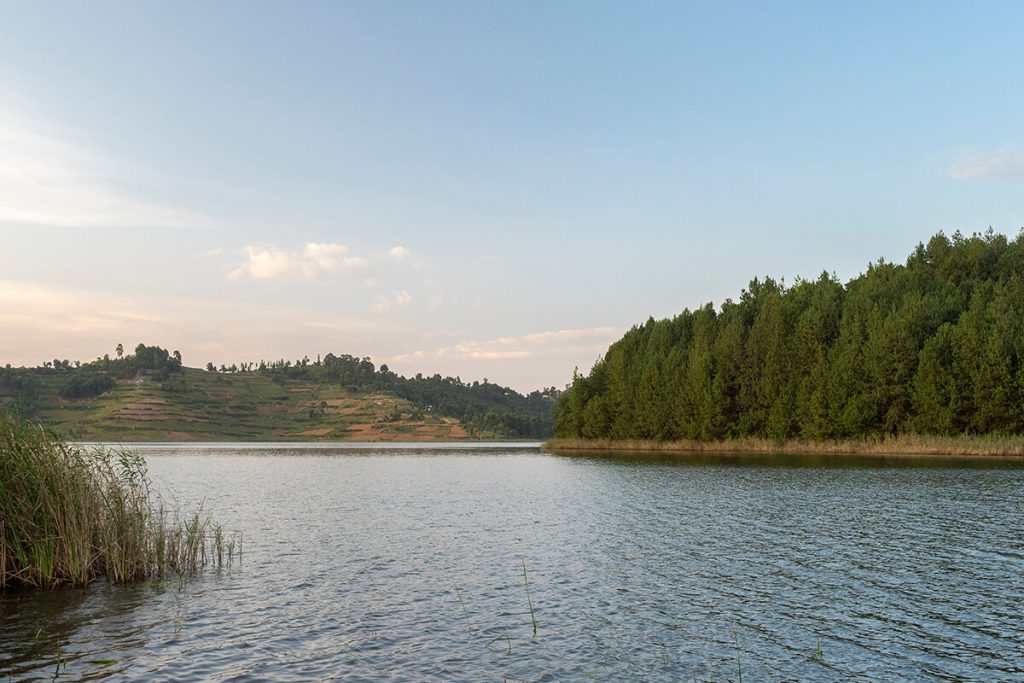
Lake Bunyonyi
Lake Bunyonyi is the ideal place to relax in Uganda after an intense route of safaris and trekking. It is one of the most idyllic landscapes in the country.
If you are planning a trip to Uganda, spending some time at Lake Bunyonyi offers a peaceful retreat surrounded by stunning scenery.

Lake Mburo National Park
The small Lake Mburo National Park is another very interesting area to enjoy Uganda’s nature. This national park features both wetlands and savanna areas. Additionally, there are no large predators, which makes it possible to go on walking safaris. Some of the most notable species you can see in this national park include zebra, impala, and Rothschild’s giraffe.
If you are planning a trip to Uganda, Lake Mburo offers a unique safari experience with the chance to explore on foot.
Uganda Safari Planning: All My Travel Guides
Uganda Gorilla Trekking Guide: Permits, Cost & When to Go
Encountering mountain gorillas in Uganda is an experience that’s hard to put into words. In this Uganda gorilla trekking guide, […]
Read MoreSafari in Queen Elizabeth National Park (Uganda)
Queen Elizabeth National Park is the ultimate safari destination in Uganda. Some sections of this national park are considered among […]
Read MoreKibale Forest: Where to See Chimpanzees in the Wild in Uganda
Seeing chimpanzees in the wild is an unforgettable experience for any nature lover. These primates are found across many African […]
Read MoreHow to visit Murchison Falls National Park (Uganda)
Murchison Falls National Park is one of the most beautiful, diverse, and surprising natural areas in Uganda. This national park […]
Read MoreZiwa Rhino Sanctuary (Uganda): Where to See Rhinos on Foot
Seeing rhinos in the wild in Uganda is not possible. Unfortunately, rhinos became extinct in the country in 1983. The […]
Read MorePlanning a Trip to Uganda: My Experience
During the preparation for this trip to Uganda, my initial idea was to rent a car with a driver. I thought it would be a bit cheaper and also give me more freedom. However, after doing the math, I realized that traveling alone, the price offered by local agencies for a 10-day trip to Uganda was very similar to what it would have cost me to travel independently with a driver.
That’s why I finally decided to book the trip with a local agency. I was able to fully customize the itinerary and organize the route through the country as I had planned. The advantage was that they handled all accommodation bookings as well as the different permits required for primate trekking.
For me, the priority of the trip to Uganda was to see chimpanzees and mountain gorillas — two wildlife experiences I had always dreamed of. Besides that, I also wanted to include a route to try to see golden monkeys in Mgahinga Gorilla National Park, located within the Virunga Mountains. These mountains are where Dian Fossey conducted her studies on mountain gorillas and played a key role in the conservation of this species.
So, I would start the trip to Uganda traveling from the capital, Entebbe, to Murchison Falls National Park. On the way, I could visit an inspiring rhino reintroduction project in Uganda: the Ziwa Rhino Sanctuary.
In Murchison Falls National Park, I could do the first safaris of the route. It’s one of the best areas in the country to see elephants, giraffes, buffaloes, and, with some luck, lions and leopards. Additionally, there is one of Uganda’s most beautiful waterfalls: the Murchison Falls.
I would continue the route heading to Kibale National Park. There, I was expecting one of the most magical experiences in Uganda: a chimpanzee trekking.
From there, I would move south to Queen Elizabeth National Park. This park is famous for the Kazinga Channel, home to one of Africa’s largest hippo populations. Also, in the Ishasha sector, there is a group of lions that have developed the unusual habit of climbing trees.
The next stop on the trip to Uganda would be the highlight of the route: trekking to see mountain gorillas in Mgahinga Gorilla National Park — a dream come true. The following day, I would try to observe the golden monkeys, a species endemic to the Virunga massif.
To finish the route, I would spend half a day at Lake Bunyonyi before returning to Entebbe.
A Complete Safari Itinerary in Uganda: My Day-by-Day Experience
Day 1: The Trip to Uganda Begins
After two layovers and nearly 24 hours of travel, I arrive in Uganda in the late morning. I meet the guide from the local agency who will accompany me throughout this itinerary.
Since the drive to Murchison Falls is quite long (around 7 hours), I prefer to stay in Entebbe to rest. I stay at Viavia Entebbe Hotel. This accommodation is simple, but very peaceful and perfect for birdwatching. It has large gardens and two small ponds where many bird species come close. I spend a good part of the afternoon identifying and photographing them.
Although it’s the dry season, a strong storm hits in the afternoon — short but intense.
If you’re planning a trip to Uganda, this kind of unexpected tropical rain, even during the dry season, is something worth keeping in mind.

Day 2: Ziwa Rhino Sanctuary
I finally hit the road and begin the route through Uganda. After about 4 hours of driving, I arrive at the first stop of the day: the Ziwa Rhino Sanctuary. This reserve, managed by the Uganda Wildlife Authority (UWA), is the only place in Uganda where you can see rhinos. They live in semi-wild conditions. The goal of this program is to eventually reintroduce them into the national parks, where they became extinct at the end of the last century.
The experience of seeing rhinos in this reserve is unique because the approach is done on foot. It’s also a great way to financially support this important conservation project.
At midday, we continue the journey toward Murchison Falls National Park — about 3 more hours by car. Near the end of the drive, along the road that runs through the park, I already spot my first elephants, giraffes, and antelopes. I was so excited to reunite with the African savannah!
If you’re planning a trip to Uganda, visiting Ziwa is a meaningful stop that combines wildlife encounters with direct conservation support.
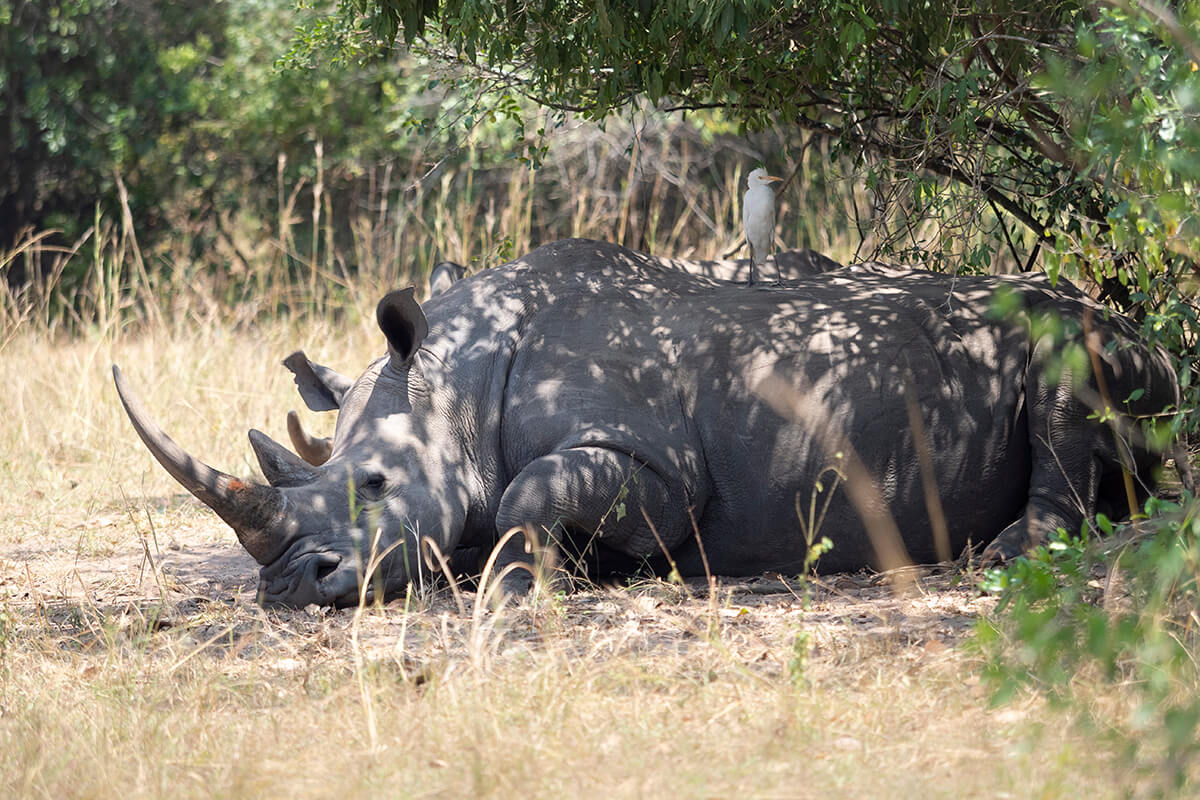
Day 3: Murchison Falls National Park
I start the day early with a safari in the northern section of Murchison Falls National Park. It’s a vast savannah landscape, filled with endless plains, and offers a wide variety of wildlife. As the sun begins to rise, I spot a group of hyenas scanning the area for carrion. The following hours are spectacular — we see Ugandan kobs, hartebeests, warthogs, elephants, giraffes… Going on safari is always incredibly exciting.
After lunch, I do one of the park’s top activities: a boat trip along the Nile River to the base of the Murchison Falls. The ride takes about three hours. While the view of the waterfall itself is a bit underwhelming, the river journey is fantastic. I see crocodiles, hippos, a wide variety of waterbirds, and even a group of elephants.
To end the day, my guide suggests going on one last safari at sunset. We’re hoping to spot a lion. After circling the park for quite some time and just as the curfew approaches, we find the ultimate prize: a beautiful lioness and her cub. It’s a magical scene — but unfortunately, I can only enjoy it for a few minutes. We have to follow park rules and exit before nightfall.
If you’re planning a trip to Uganda, a visit to Murchison Falls offers a perfect combination of land and river safaris, and unforgettable wildlife encounters.

Day 4: The Top of Murchison Falls and Transfer to Kibale Forest
Murchison Falls are known as the most powerful waterfalls in the world — with 300 m³/s of water thundering through. One of the best viewpoints is from the top of the river. In the past, it was possible to hike up from the boat trip on the Nile, but the trail has since been destroyed. Now, to reach the top, you need to drive about 15 kilometers.
I arrive at the top of the falls just as the sun begins to rise. There’s no one else around. And I’m mesmerized by the landscape. The water crashes down with incredible force, and the mist it generates creates a perfect rainbow.
With that unforgettable moment, I say goodbye to Murchison Falls National Park. A long drive awaits — around eight hours — to reach Kibale National Park. Once I arrive at my lodge, Kibale Forest Camp, I take a walk through the gardens. I’m lucky enough to come across a group of red colobus monkeys and black-and-white colobus monkeys.
If you’re planning a trip to Uganda, combining Murchison Falls and Kibale offers a stunning contrast between savannah landscapes and lush tropical forests — and unforgettable encounters with primates.

Day 5: The Chimpanzees of Kibale National Park
One of the most anticipated days of this trip to Uganda has arrived: the chance to see wild chimpanzees inside Kibale National Park.
To enjoy a more in-depth experience, I join the habituation experience. This activity involves tracking a group of chimpanzees that are in the process of becoming accustomed to humans. Once found, you get to spend four hours with them.
Still in the early morning darkness, around 7 a.m., I join the group and, following the national park guide, we begin walking. The first step is figuring out where the chimpanzees are. It doesn’t take long to locate them thanks to their loud calls. Then, off-trail through the forest, we go to find them.
The moment I see the first chimpanzee is magical. He’s lying on the ground, watching us. The next four hours are unforgettable. I see the chimpanzees eating, climbing trees, calling out, grooming each other…
It’s one of the most incredible experiences of the entire trip to Uganda.
At midday, once we return to the park entrance, I hop into the car and head to Queen Elizabeth National Park. It’s about a two-and-a-half-hour drive.

Day 6: Queen Elizabeth National Park
Queen Elizabeth National Park is one of Uganda’s most highly rated natural areas for safaris and spotting large amounts of wildlife. The park is crossed by the Kazinga Channel, where boat trips allow you to see hippos, crocodiles, elephants, and buffalo. This channel is home to one of the highest hippo densities in all of Africa.
I start the day by entering the park early, hoping to spot a pride of lions while they’re still active. Although I manage to see a lioness and her two cubs, they’re far away and quickly disappear into the vegetation. For the rest of the morning, we drive along various tracks that crisscross the savannah. I see a few elephants and a large group of buffalo, but overall, I’m disappointed by the limited wildlife. Due to the heat and lack of water, most animals gather near the channel.
At midday, however, I’m amazed by the boat trip along the Kazinga Channel. I see dozens of hippos up close, as well as a large group of elephants bathing and drinking at the water’s edge.
There are still about three hours left before nightfall, and my guide suggests heading out for one more safari to try our luck. We explore several areas in the northern part of the park, but again, with little success. The highlight of the afternoon is a group of four elephants.
If you’re planning a trip to Uganda, Queen Elizabeth National Park offers varied landscapes and the unique opportunity to explore both by land and by water — even if wildlife sightings can sometimes be unpredictable.

Day 7: Transfer to the Virunga Mountains
When planning a trip to Uganda, it’s important to keep in mind that the distances between some of the national parks are long, and there may be days when you spend most of your time on the road.
I leave around 8 a.m. from Buffalo Safari Lodge, heading toward Mgahinga Gorilla National Park. This is the smallest national park in the country and one of the places where you can see mountain gorillas. Although it’s not the most famous (Bwindi National Park is much more popular), for me it has two very special features. First, it’s part of the Virunga volcano massif — the region where mountain gorillas were first studied and conservation efforts began. Second, this national park is home to the gorilla family with the highest number of silverback males — three, to be exact.
Around 4 p.m., I arrive at a beautiful lodge by Lake Mutanda: Mutanda Lake Resort. From there, I enjoy an excellent view of the three mountains within Mgahinga Gorilla National Park: Muhavura Volcano, Mgahinga Volcano, and Mount Sabyinyo.

Day 8: The Mountain Gorillas of Mgahinga Gorilla National Park
Today is the day one of my dreams comes true. The main reason behind planning a trip to Uganda. If everything goes well, today I’ll get to spend an intense hour with a group of mountain gorillas.
At 7:30 a.m., I arrive at the entrance of Mgahinga Gorilla National Park — specifically, the Muhabura Gate — where I’ll begin tracking the Nyakagezi family of gorillas.
After an exciting performance of traditional dances by the local community, we begin walking. We haven’t been walking long when the team of trackers, who set out earlier in the morning, contact our guide: they’ve already located the mountain gorillas.
They’re quite close. After about an hour of walking, we find the first gorilla. It’s a powerful, emotional moment — hard to put into words. The hour I spend with them, photographing them and watching them from up close, is something I’ll never forget.
When the allowed time is over, we retrace our steps and return to the park entrance.
I spend the rest of the afternoon at the historic Travelers Rest Hotel.
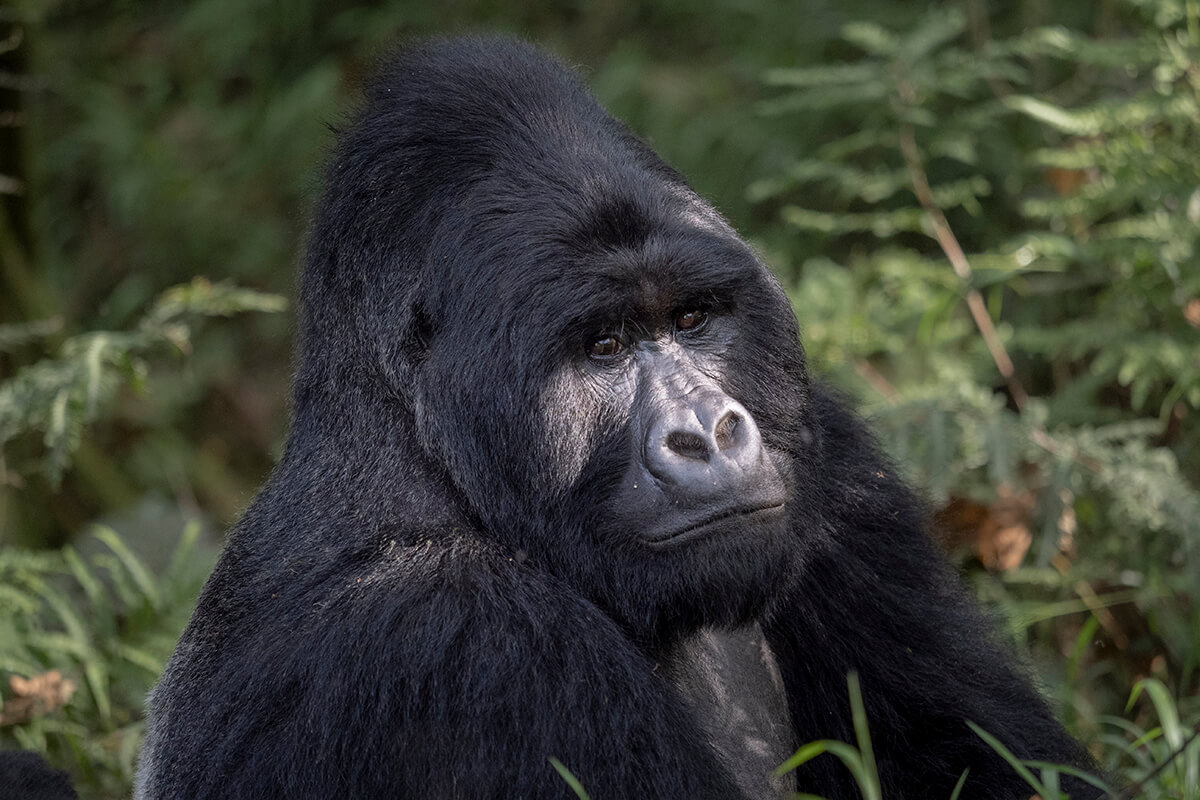
Day 9: The Golden Monkeys of the Virunga Mountains
Along the Virunga volcano massif, there’s a unique endemic monkey species: the golden monkey (Cercopithecus kandti). In Uganda, this species can only be seen in Mgahinga Gorilla National Park.
Just like with the gorillas, there’s a group of golden monkeys that has been habituated to humans and can be visited with the help of a guide and a team of trackers. Again, the visit is limited to one hour.
At 7:30 in the morning, I arrive at the park entrance — this time at a different gate: Ntebeko Gate. From there, we walk for about two hours before finding the group of golden monkeys. I watch them as they leap through the trees, chew on bamboo, and play with each other.
After an hour, it’s time to return to the starting point.
Once I meet up with my guide, we hop in the car and drive to Lake Bunyonyi. This lake is 25 kilometers long and 7 kilometers wide — an ideal natural setting to relax after an intense route through Uganda. I spend the afternoon walking around the small island where my lodge is located and photographing birds.
If you’re planning a trip to Uganda, spending time in Mgahinga to see both the mountain gorillas and golden monkeys is an extraordinary way to connect with Uganda’s unique biodiversity — and Lake Bunyonyi offers the perfect retreat afterward.

Day 10: The End of the Trip to Uganda
The end of my trip to Uganda is near. I have an eight-hour drive ahead of me to reach Entebbe, where the airport is located.
As the sun begins to rise, I board the boat that will take me from the lodge to the car. The drive is long, but the road is in excellent condition, allowing for smooth travel.
Several hours after crossing back over the equator, I arrive in Entebbe. To get there, we take the ferry across Lake Victoria.
Now all that’s left is to wait for my flight, which departs the next day. Uganda has completely fascinated me — and left me eager to return and explore this country more deeply.
If you’re planning a trip to Uganda, be prepared for incredible landscapes, powerful wildlife encounters, and the desire to come back before you’ve even left.

Planning a Trip to Uganda with a Local Tour Operator
If you want to simplify your trip to Uganda, a great option is to book a safari directly with a trusted local agency. This way, you avoid intermediaries and can access more affordable and authentic options. I’ve had the chance to book several safaris directly with local agencies in Uganda, Kenya, Tanzania and Botswana, and it has always been a very positive experience.
If you’d like to connect with recommended local agencies in Uganda, just fill out this form, and I’ll share your details with the agency or agencies I trust, making sure they are the best fit for the type of safari you want to experience.
You can also get inspired by these itinerary suggestions I’ve created together with the local tour operators I trust in Uganda.
3-Day Uganda Safari: Gorilla Trekking in Bwindi National Park
🏕️ Budget Safari💰 From $1,400 per person
View Safari6-Day Best of Uganda Safari: Gorillas, Chimps & Game Drives
🏕️ Mid-Range Safari💰 From $2,500 per person
View Safari3-Day Uganda Safari: Wildlife Tour to Queen Elizabeth National Park
🏕️ Mid-Range Safari💰 From $790 per person
View Safari2-Day Uganda Safari: Gorilla Trekking Adventure in Bwindi Forest
🏕️ Mid-Range Safari💰 From $1,310 per person
View Safari
